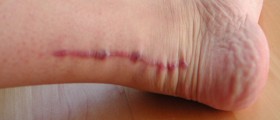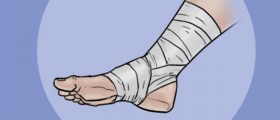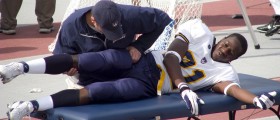
Ruptures of the quadriceps tendon are often associated with systemic disease or degenerative changes in the knee extensor. The problem is relatively rare and tends to normally occur in those over the age of 40. This type of injury is more common than patellar tendon injury, which usually occurs in those under 40 years old. Partial quadriceps tendon ruptures are sometimes seen in young athletes. In 25% of jumper’s knee cases, the quadriceps tendon is involved.
Problems
Those with a torn quadriceps tendon might experience loss of motion and extensor mechanism weakness. Other complications include infection, wound compromise and skin breakdown. Any malalignment that occurs can possibly lead to degenerative changes of the patellofemoral joint. In some rare cases, repeat rupture occurs - in about one or two out of fifty cases.Treatment
In order to treat partial tears, conservative treatment is recommended. This should involve immobilization of the knee, which should last about 3 to 6 weeks. Some exercises, such as straight-leg raises and range-of-motion exercises are recommended. If straight-leg raises can be performed comfortably for ten successive days, immobilization is no longer necessary.
Surgery is, however, the most successful treatment for a complete tear. Some methods of surgery that can prove useful in this regard are traction sutures, carbon fiber, mersilene sutures, dacron graft, polyester graft, free fascial graft, vastus lateralis flaps and the use of kangaroo tendon. In some cases, suture anchors might be employed, but, in general, the main techniques of repair used are the Scuderi technique for acute tears, direct repair of the tendon and the Codivilla tendon-lengthening technique.
Recovery
Early repair tends to lead to positive results and successful recovery. Weakness in the quadriceps tends to result from this injury, but normally one can expect a good result with regard to range of motion. Generally, patients will be able to return to work, but in many cases, patients will not be able to return to their previous activity level. Delayed repair can lead to worsened results with regard to recovery. However, even those who undergo delayed repair are likely to regain motion to within 2 º of the uninjured leg.
There are some conflicting opinions as regards the correct approach to several aspects of treatment. Some are in favor of immediate postoperative motion, others call for mobilized rather than immobilized tendons. Many believe in an earlier return to motion, while others believe that six weeks is the correct recovery period. It is likely, however, is that ambiguity will remain in this regard.

















Your thoughts on this
Loading...